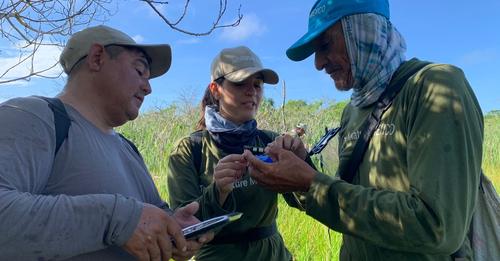
Global conservation foundation, the International Union for Conservation of Nature (IUCN), has an ongoing partnership with Shenzhen-headquartered Huawei, and wants more tech firms to help with wildlife monitoring efforts.
In October 2023 Huawei and the IUCN signed a strategic cooperation agreement of Phase 2 of a joint effort to use technology to help protect biodiversity. A task that become easier with the use of intelligent sensors, cameras and AI.
Aligned with Huawei’s TECH4ALL initiative and IUCN’s Green List, the launch of Tech4Nature in 2020 marked the first time that either Huawei or IUCN has established a major partnership spanning the ICT and nature conservation sectors.
A key output of Phase 2 will be to facilitate further collaboration between the two sectors. “Technology allows us to bridge the gap between science and action,” said Dr Grethel Aguilar, Acting Director General of IUCN. “Conservationists can harness the power of big data, artificial intelligence, and machine learning to analyse vast datasets and ecological trends. This invaluable information aids in the identification and protection of critical habitats, guides our efforts, and can leverage necessary resources to protect threatened species.”
Phase 2 will expand the global impact of the Tech4Nature partnership and scale-up the use of digital technologies to drive the effective and equitable management of protected and conserved areas.
Together, IUCN and Huawei will develop technology-based solutions for pilot projects in at least five countries, including Brazil, Kenya, Turkey, Mexico, and China. The Tech4Nature partnership will also contribute to the implementation of the 30×30 target defined in the Kunming-Montreal Global Biodiversity Framework (GBF), which calls for 30% of the Earth’s land and sea areas to be conserved by establishing protected areas and effective area-based conservation measures.
The partners plan to support the implementation of the GBF through knowledge-sharing and capacity-building, including supporting the Global Species Action Plan (GSAP) online knowledge platform and developing knowledge products. “We believe that the Tech4Nature initiative will build on the success of the first phase and expand its global impact,” said Peng Song, Senior Vice President of Huawei and President of ICT Strategy and Marketing in his speech during the signing ceremony for the launch of Phase 2.
“We also believe that more partners will join the Tech4Nature initiative, embrace digital technology, and contribute to the sustainable development of the planet.” Marking the beginning of the second phase of the partnership, was the launch of the Tech4Nature – A Partnership for Our Planet publication. This publication draws together the best practices and experiences of the first phase of the partnership between Huawei and IUCN, which piloted the use of ICT for nature conservation in five protected areas across the globe.
It also features guidance on how technology can help different protected and conserved areas achieve the IUCN Green List Standard, and the role of technology in the GBF implementation.
Sources:
IUCN and Huawei, October 12, 2023. https://iucn.org/…/2023-10/tech4nature-press-release.pdf
Eco-Business, Aug. 8, 2024. https://www.eco-business.com/…/the-world-is-racing-to…/